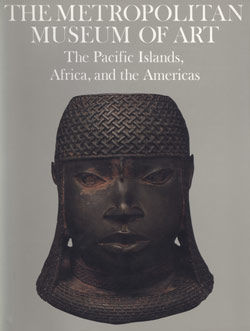Mask (eharo)
Not on view
The Elema people of the Papuan Gulf in southeast New Guinea formerly practiced an elaborate cycle of masked rituals. While some mask types were sacred, others, such as this eharo mask, were created primarily for amusement. To the Elema eharo were "maea morava eharu" ("things of gladness"), danced as a prelude to more sacred rituals. Eharo represent supernatural beings as well as humorous figures, such as lecherous old men.
They were made and worn by young men from neighboring villages at the request of the village hosting the ceremony. As they entered the host village, the women pelted them with shredded coconut to neutralize their seductive powers. Now harmless, the eharo danced surrounded by large groups of women to the amusement of the assembled crowd.
#1747. Eharo Mask, Part 1
-
1747. Eharo Mask, Part 1
-
1747. Eharo Mask, Part 2
Playlist
Due to rights restrictions, this image cannot be enlarged, viewed at full screen, or downloaded.
This artwork is meant to be viewed from right to left. Scroll left to view more.







